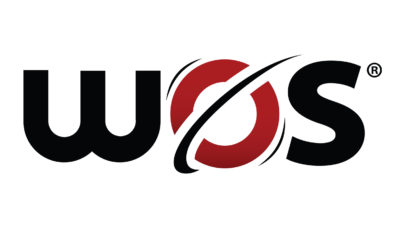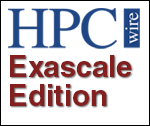


The (Resilient) HPC Market Writ Large in 100-plus Slides by Hyperion
Hyperion Research delivered its annual ISC 2021 HPC market update and this year’s version comprised a 100-plus slide survey of the landscape presented by six analysts. We won’t cover all 100- …

Intel Touts Optane Performance, Teases Next-gen “Crow Pass”
Competition to leverage new memory and storage hardware with new or improved software to create better storage/memory schemes has steadily gathered steam during the past couple of years. Intel’ …

HPCwire’s 2024 People to Watch
Find out which 12 HPC luminaries are being recognized this year for driving innovation within their particular fields.

Intel’s Optane/DAOS Solution Tops Latest IO500
August 11, 2020
Intel’s persistent memory technology, Optane, and its DAOS (Distributed Asynchronous Object Storage) stack continue to impress and gain market traction. Yeste Read more…

HPC in Life Sciences Part 1: CPU Choices, Rise of Data Lakes, Networking Challenges, and More
February 21, 2019
For the past few years HPCwire and leaders of BioTeam, a research computing consultancy specializing in life sciences, have convened to examine the state of HPC (and now AI) use in life sciences. Without HPC writ large, modern life sciences research would quickly grind to a halt. It’s true most life sciences research computing... Read more…

Robust Quantum Computers Still a Decade Away, Says Nat’l Academies Report
December 5, 2018
The National Academies of Science, Engineering, and Medicine yesterday released a report – Quantum Computing: Progress and Prospects – whose optimism about Read more…

Researchers Use DNA to Store and Retrieve Digital Movie
July 18, 2017
From abacus to pencil and paper to semiconductor chips, the technology of computing has always been an ever-changing target. The human brain is probably the com Read more…

Latest DDN Launch Fills out its WOS Object Storage Line
September 13, 2016
DataDirect Networks (DDN) today introduced a third member to its WOS object storage product line, the WOS 8460, aimed at active archive and collaboration use cases. Object storage, once mainly restricted to ‘cold’ archives for large quantities of unstructured data – think content delivery networks (CDN) used in conjunction with the web – has been slowly expanding its footprint into other application areas. The new DDN product fills out the company’s object storage portfolio and is positioned between DDN’s WOS 9660 offering, intended more for traditional ‘cold’ archives, and WOS 7000, which is well suited for embedded applications such as use with S3. Read more…

Tianhe-1A Shuts Down After Deadly Double Blast
August 13, 2015
Citing safety and security concerns following an industrial accident that killed more than 50 people and injured hundreds more in northeast China on Wednesday Read more…

Tracking the Trajectory to Exascale and Beyond
June 8, 2015
The future of high performance computing is now being defined both in how it will be achieved and in the ways in which it will impact diverse fields in science Read more…

Data Protection: One Size Does Not Fit All
April 10, 2013
In object storage applications, cluster sizes run the gamut from just a few nodes built into a medical imaging modality to thousands of nodes spanning multiple datacenters. Fulfilling the economic and manageability promises of a unified storage approach means using the best protection scheme for each particular use case. The proposed solution leverages both replication and erasure coding to ensure scalability, while optimizing footprint efficiency. Read more…

- Click Here for More Headlines

Whitepaper
Transforming Industrial and Automotive Manufacturing
In this era, expansion in digital infrastructure capacity is inevitable. Parallel to this, climate change consciousness is also rising, making sustainability a mandatory part of the organization’s functioning. As computing workloads such as AI and HPC continue to surge, so does the energy consumption, posing environmental woes. IT departments within organizations have a crucial role in combating this challenge. They can significantly drive sustainable practices by influencing newer technologies and process adoption that aid in mitigating the effects of climate change.
While buying more sustainable IT solutions is an option, partnering with IT solutions providers, such and Lenovo and Intel, who are committed to sustainability and aiding customers in executing sustainability strategies is likely to be more impactful.
Learn how Lenovo and Intel, through their partnership, are strongly positioned to address this need with their innovations driving energy efficiency and environmental stewardship.
Download Now
Sponsored by Lenovo
Whitepaper
How Direct Liquid Cooling Improves Data Center Energy Efficiency
Data centers are experiencing increasing power consumption, space constraints and cooling demands due to the unprecedented computing power required by today’s chips and servers. HVAC cooling systems consume approximately 40% of a data center’s electricity. These systems traditionally use air conditioning, air handling and fans to cool the data center facility and IT equipment, ultimately resulting in high energy consumption and high carbon emissions. Data centers are moving to direct liquid cooled (DLC) systems to improve cooling efficiency thus lowering their PUE, operating expenses (OPEX) and carbon footprint.
This paper describes how CoolIT Systems (CoolIT) meets the need for improved energy efficiency in data centers and includes case studies that show how CoolIT’s DLC solutions improve energy efficiency, increase rack density, lower OPEX, and enable sustainability programs. CoolIT is the global market and innovation leader in scalable DLC solutions for the world’s most demanding computing environments. CoolIT’s end-to-end solutions meet the rising demand in cooling and the rising demand for energy efficiency.
Download Now
Sponsored by CoolIT
Advanced Scale Career Development & Workforce Enhancement Center
Featured Advanced Scale Jobs:
HPCwire Resource Library
HPCwire Product Showcase
© 2024 HPCwire. All Rights Reserved. A Tabor Communications Publication
HPCwire is a registered trademark of Tabor Communications, Inc. Use of this site is governed by our Terms of Use and Privacy Policy.
Reproduction in whole or in part in any form or medium without express written permission of Tabor Communications, Inc. is prohibited.
































